Big Foliage for Small Spaces
http://decor-ideas.org 07/20/2014 23:15 Decor Ideas
An exceptional garden is one that embraces and celebrates the unexpected. This can be a challenge in the smaller, more urban gardens that are becoming the norm for many of us. One way to inject unexpected interest into your small space is by introducing plants with large foliage.
Many of us were taught that small rooms require small furniture to match the scale and not overpower visitors. We often design our gardens in the same way. However, the proper use of larger elements in smaller spaces can create contrast that reads as a positive. Let’s look at how to create that contrast with large foliage, when to do it and some plants that will help us do it with style.
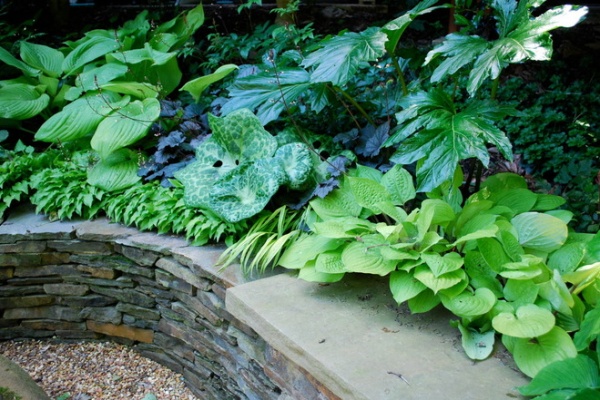
Create a mood. The best gardens leave a lasting impact on their visitors by creating a mood. Using large foliage is a great way to accomplish this.
This seating area was designed to create a child-like experience for those who visit. The area was excavated and sunken into the surrounding terrain. With plantings placed higher than terrace level, the perceived scale of the visitor is diminished. The use of large-foliaged plants such as bear’s breech (Acanthus mollis, USDA zones 7 to 9), Spotty Dotty Chinese mayapple (Podophyllum ‘Spotty Dotty’, zones 6 to 9) and various hostas (Hosta cvs, zones 3 to 9) reinforces this perceived scale and, ultimately, creates a child-like vibe that rekindles pleasant memories.
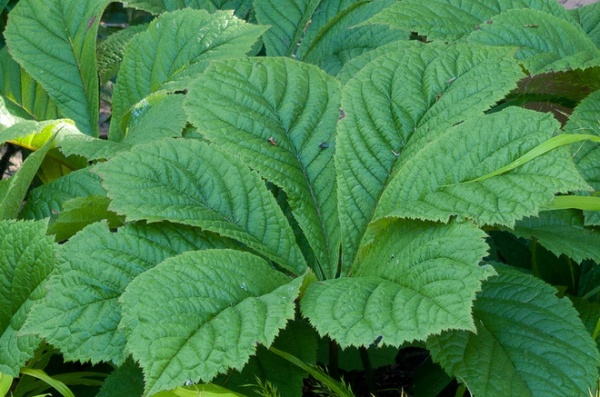
Boldly introduce texture. Humans have an innate response to texture; the best gardens gently exploit and reinforce this. With its large, quilted leaves, this Rodgersia pinnata (zones 5 to 7) does just that. Each leaf has six to nine leaflets, each of which can reach 8 inches in length. Surround this plant with smaller-leaved plants along a woodland garden path, and you will have a dramatic vignette.
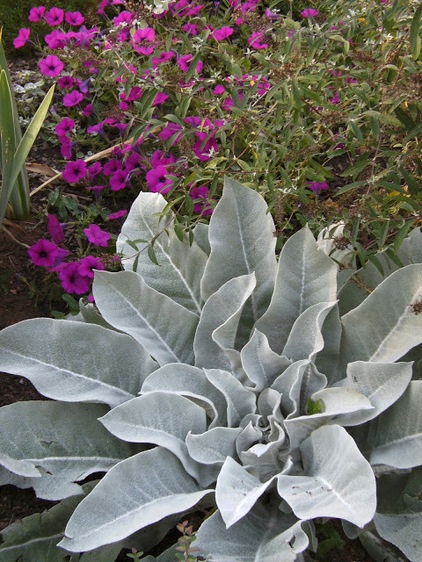
This giant silver mullien (Verbascum bombyciferum, zones 3 to 9) goes a step further, introducing both texture and color to this planting scheme. The result is jaw-dropping.
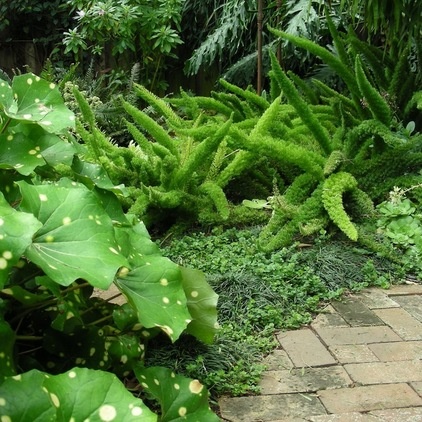
Balance your planting scheme. Good design is balanced design, referring to the perceived visual weight of a composition. Balance doesn’t need to be boring, however. Think of a childhood seesaw, a fulcrum, that is balanced with regard to weight by having an adult on one end and multiple children on the other. This is what we mean by asymmetrical balance.
The garden composition shown here works well on several levels. The wildly textural mass of asparagus fern (Asparagus densiflorus, zones 9 to 11) on the right is balanced by the large-leaved leopard plant (Farfugium japonicum ‘Aureomaculata’, zones 7 to 12) on the left. With leaves that can grow to dinner-plate size, the leopard plant brings to mind the calm but stern presence of a father keeping his wild and energetic children in check. It is images such as these, created in the minds of your visitors, that will make visitors’ time spent in your garden memorable.
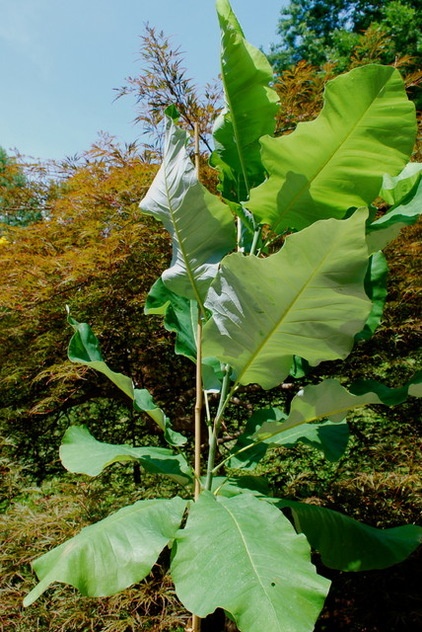
Create dramatic shade. While patio umbrellas and awnings are certainly utilitarian, they can also be very predictable. Consider planting a large-leaved tree such as this Ashe magnolia (Magnolia macrophylla ‘Ashei’, zones 6 to 9) instead. This smaller subspecies can sport leaves up to 2 feet in length, and the tree itself grows to 20 to 25 feet instead of the 40 feet typical of the species. The fragrant flowers are white with purple petal bases.
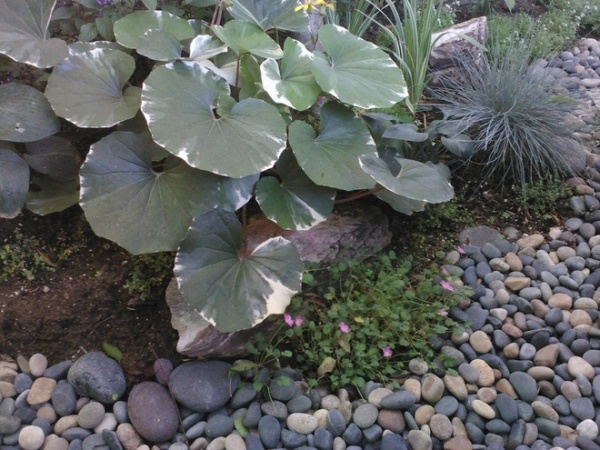
Infuse your shade garden with light. Plants with chartreuse and variegated foliage are a garden designer’s secret weapon for brightening up a shady spot. This variegated leopard plant does just that. Its large leaves maximize photosynthesis in a shaded environment.
See more ways to brighten a shade garden
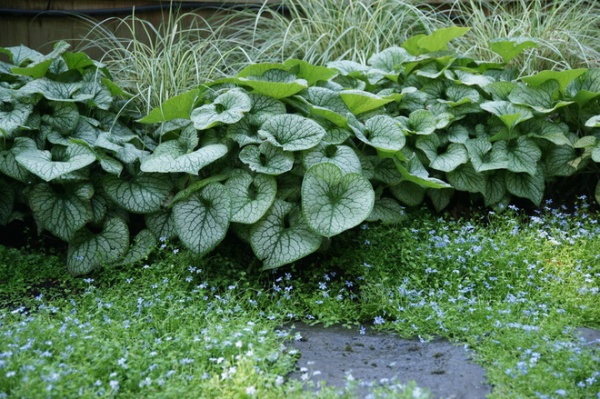
Northern gardeners will recognize and appreciate Siberian bugloss (Brunnera cvs, zones 3 to 8). This shade-loving perennial also brightens up a woodland garden.
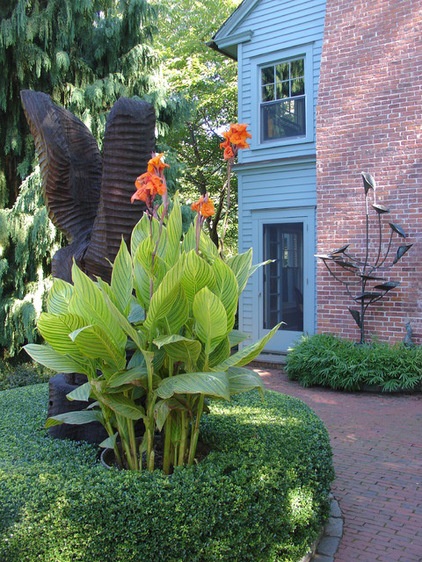
Reinforce sculpture. Large sculptural pieces frequently need to be cohesively integrated into a garden. Big-leaved plants rise to the challenge. Bold sculpture demands bold foliage; more organic sculpture requires less dramatic foliage. Canna lilies (Canna cvs, zones 8 to 11) hold their own against this dramatic sculpture while tying it to the garden. Cannas can be grown as annuals in more temperate zones. This potted specimen is seasonally placed in the garden.
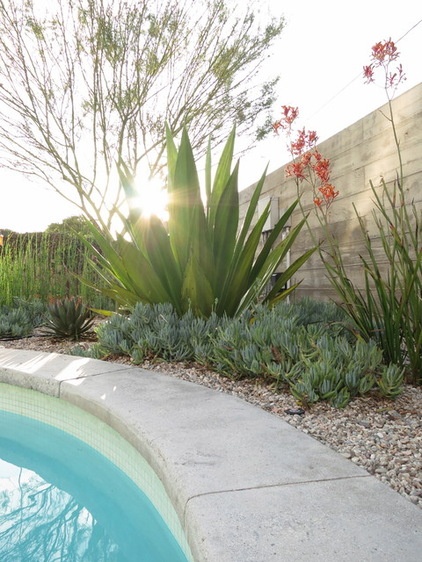
Use plants as sculpture. Some plants, such as this agave-like Furcraea (zones 9 to 11), are so dramatic that they effectively function as living sculpture. They are shown to best advantage when planted as a focal point. In this garden the furcraea softens a garden corner while captivating the eye.
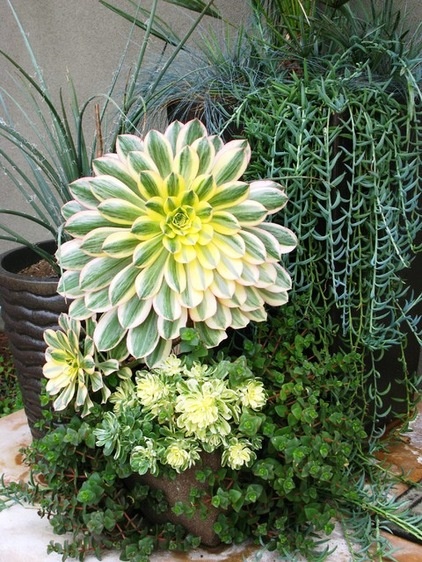
Create a splash in seasonally planted pots. Tired of coleus and petunias in that pot on your front porch? Consider a large-leaved succulent such as this aeonium (zones 9 to 11) as an alternative. Your neighbors are guaranteed to notice.
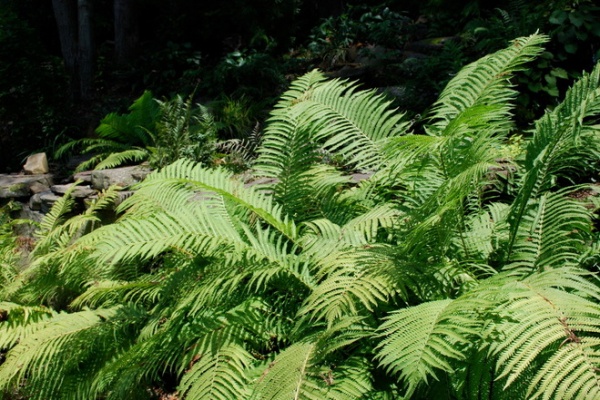
Create mass plantings for drama. Planting en masse is one of a garden designer’s best-kept secrets. My philosophy is this: Why plant one when you could just as well plant 50? For gardens with shade to partial shade, the ostrich fern (Matteuccia struthiopteris, zones 3 to 8) is well suited. This deciduous fern can grow to 8 feet in diameter with fronds up to 6 feet in height. To achieve maximum size, this fern requires consistently moist to wet soil.
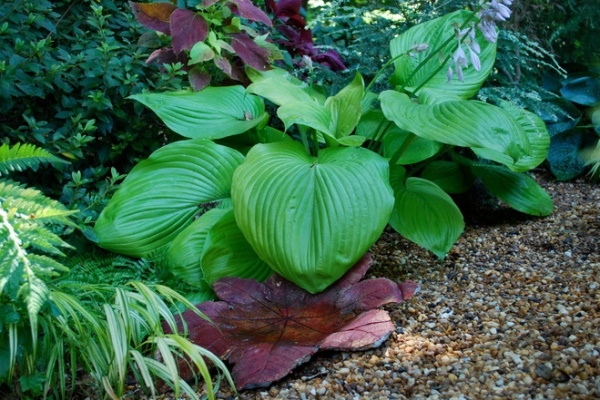
Create a vignette. Large foliage, when used artistically, can seductively reveal garden secrets. This ‘Sum and Substance’ hosta (Hosta ‘Sum and Substance’, zones 3 to 8) can grow to 3 feet high and 5 feet wide, with leaves exceeding 15 by 20 inches. Consider placing small sculptural pieces underneath. It is small unexpected details such as this that will enable your garden to be exceptional.
More: 16 Ways to Get More From Your Small Backyard
Related Articles Recommended












